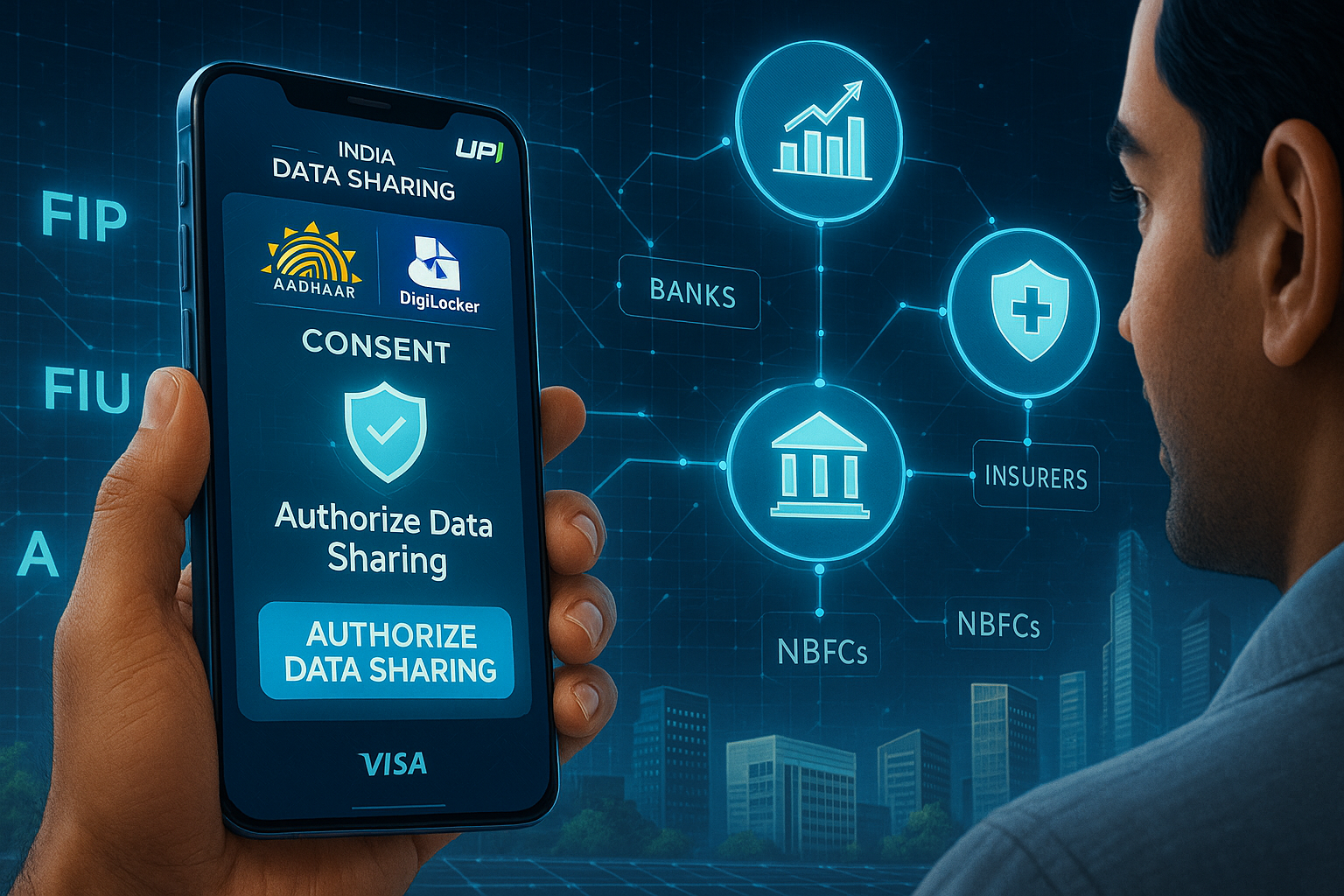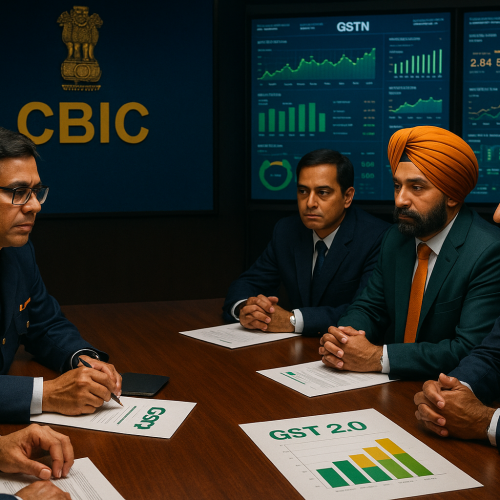India is witnessing a silent revolution in how financial data is shared, accessed, and monetized—driven by the Account Aggregator (AA) Framework, a consent-based system that enables individuals to control their personal financial data across banks, insurers, NBFCs, and investment platforms. As adoption surges in 2025, more than 300 million users are expected to be onboarded to the AA ecosystem, unlocking faster loans, personalized financial advice, and inclusive credit access. This shift places data ownership back into the hands of consumers—securely and transparently.
Background and Context
Launched by the Reserve Bank of India (RBI) in 2021 and regulated under NBFC-AA license, the Account Aggregator network is a part of India’s Digital Public Infrastructure (DPI)—alongside UPI and DigiLocker. It enables the secure, real-time sharing of financial information from banks (FIPs—Financial Information Providers) to third-party service providers (FIUs—Financial Information Users), only after explicit customer consent.
For decades, borrowers had to print and submit physical bank statements, ITRs, or mutual fund records for loans or financial advice. The AA framework eliminates friction, paperwork, and risk, creating an API-driven ecosystem for digital finance that is fast, inclusive, and consent-driven.
Current State of Adoption (2025)
Over 3.2 crore accounts have been linked to the AA ecosystem.
Leading banks—HDFC Bank, SBI, Axis, ICICI, Kotak, Federal Bank, and IDFC FIRST—are live as FIPs and FIUs.
More than 120 NBFCs and fintechs use AA data to offer instant credit products.
Mutual fund RTAs, insurers, and tax platforms have joined AA via DigiLocker integrations.
“AA has transformed how we underwrite loans—we now access validated financial data in under 30 seconds,” says a product head at a leading digital lender.
Key Use Cases of Account Aggregator
1. Instant Digital Lending
NBFCs like Lendingkart, Groww, and KreditBee access real-time bank statement data for:
Loan approvals within minutes
Thin-file borrowers or freelancers
Working capital credit for MSMEs
2. Wealth Management & Robo-Advisory
Platforms like Cube Wealth, ET Money, and INDMoney offer:
Holistic wealth views (across bank, MF, and insurance)
Hyper-personalized investment suggestions
Tax optimization using cashflow insights
3. Insurance Underwriting
InsurTechs use AA data to assess:
Income stability
Payment behavior
Risk profiling for term and health insurance
4. Credit Bureau Alternative
AA offers alternative credit scoring, especially for:
Gig workers
First-time borrowers
Informal income segments
Social Media Buzz & Industry Reactions
@IndiaStackNow
“The Account Aggregator framework gives data control back to users. No more PDF uploads. Consent is the new currency. #AAIndia #OpenFinance”
@FintechVoiceIN
“AA + UPI + DigiLocker = India’s next Fintech goldmine. API-based lending is just the beginning. #AccountAggregator #BharatFinance”
@RBIUpdate
“Account Aggregators are key to a secure, inclusive financial ecosystem. Consent-first, data-blind, and tamper-proof. #DigitalIndia #DPDPA”
Regulatory & Data Protection Considerations
DPDP Act, 2023 mandates user consent, minimal data sharing, and secure APIs.
RBI’s master directions ensure:
End-to-end encryption
Non-storage of data by AA intermediaries
Audit trails and revocable consent
RBI recently approved Video Consent Capture and Voice Consent Replay Logs to improve AA access in Tier-3 towns and senior citizen groups.
Challenges and Gaps
Limited awareness among rural users and MSMEs.
Lack of UI standardization across AAs leads to inconsistent user journeys.
Not all institutions (like insurers or small banks) are yet fully integrated.
Monetization model for AAs remains unclear—leading to revenue sustainability concerns.
Future Outlook
AA + UPI Credit: Credit lines can soon be pre-approved and disbursed in real-time using AA data and UPI disbursement rails.
Cross-Domain Sharing: Tax filings, utility bill payment history, and telecom data will be added via DigiLocker-AI integrations.
Open Finance Layer: India is building a regulated Open Finance system, with AAs acting as consent managers for all digital personal data.
Rural Financial Inclusion: Voice-guided AA journeys in Hindi, Tamil, and Bengali are being piloted for onboarding informal workers.
Conclusion
The Account Aggregator framework is reshaping financial access in India—not through radical disruption but via quiet infrastructure innovation. By enabling real-time, consent-based, secure data sharing, it democratizes credit, insurance, and wealth management. As more institutions join and integrations mature, AA is poised to become India’s backbone for Open Finance, putting data dignity and user empowerment at the core of BFSI transformation.












